Prohibit Guns in Sensitive Areas
Prohibit Guns in Sensitive Areas
What does this solve?
All fifty states and the District of Columbia allow civilians to carry concealed guns in public places. Laws differ in each state, but certain sensitive areas are always unsafe for guns.
In addition to keeping guns out of schools and off of college campuses, all states should prohibit civilians from carrying guns in sensitive places. This should include daycare centers, playgrounds and other places where children gather, bars and restaurants that serve alcohol, public demonstrations and rallies, airports, and courthouses. No location should ever be required by the government to allow guns. Unfortunately, many states’ laws fail to prohibit guns in sensitive areas.
Which states don’t allow teachers or the general public to carry guns in K–12 schools?
33 states have adopted this policy
No Guns in K-12 Schools
Alabama has adopted this policy
No Guns in K-12 Schools
Alaska has adopted this policy
No Guns in K-12 Schools
Arizona has adopted this policy
No Guns in K-12 Schools
Arkansas has adopted this policy
No Guns in K-12 Schools
California has adopted this policy
No Guns in K-12 Schools
Colorado has adopted this policy
No Guns in K-12 Schools
Connecticut has adopted this policy
No Guns in K-12 Schools
Delaware has adopted this policy
No Guns in K-12 Schools
Florida has not adopted this policy
- If not, who is allowed to carry under state law?
- School personnel
No Guns in K-12 Schools
Georgia has not adopted this policy
- If not, who is allowed to carry under state law?
- School personnel
No Guns in K-12 Schools
Hawaii has adopted this policy
No Guns in K-12 Schools
Idaho has not adopted this policy
- If not, who is allowed to carry under state law?
- School employees with permission
No Guns in K-12 Schools
Illinois has adopted this policy
No Guns in K-12 Schools
Indiana has adopted this policy
No Guns in K-12 Schools
Iowa has not adopted this policy
- If not, who is allowed to carry under state law?
- School employees
No Guns in K-12 Schools
Kansas has not adopted this policy
- If not, who is allowed to carry under state law?
- School personnel and any other permit holders
No Guns in K-12 Schools
Kentucky has adopted this policy
No Guns in K-12 Schools
Louisiana has adopted this policy
No Guns in K-12 Schools
Maine has adopted this policy
No Guns in K-12 Schools
Maryland has adopted this policy
No Guns in K-12 Schools
Massachusetts has adopted this policy
No Guns in K-12 Schools
Michigan has adopted this policy
No Guns in K-12 Schools
Minnesota has adopted this policy
No Guns in K-12 Schools
Mississippi has not adopted this policy
- If not, who is allowed to carry under state law?
- Any permit holders; School personnel
No Guns in K-12 Schools
Missouri has not adopted this policy
- If not, who is allowed to carry under state law?
- School personnel
No Guns in K-12 Schools
Montana has adopted this policy
No Guns in K-12 Schools
Nebraska has adopted this policy
No Guns in K-12 Schools
Nevada has adopted this policy
No Guns in K-12 Schools
New Hampshire has not adopted this policy
- If not, who is allowed to carry under state law?
- Any permit holders
No Guns in K-12 Schools
New Jersey has adopted this policy
No Guns in K-12 Schools
New Mexico has adopted this policy
No Guns in K-12 Schools
New York has adopted this policy
No Guns in K-12 Schools
North Carolina has adopted this policy
No Guns in K-12 Schools
North Dakota has not adopted this policy
- If not, who is allowed to carry under state law?
- School personnel
No Guns in K-12 Schools
Ohio has not adopted this policy
- If not, who is allowed to carry under state law?
- Individuals with written authorization of the board of education or governing body, including teachers
No Guns in K-12 Schools
Oklahoma has not adopted this policy
- If not, who is allowed to carry under state law?
- School personnel
No Guns in K-12 Schools
Oregon has not adopted this policy
- If not, who is allowed to carry under state law?
- Any permit holders
No Guns in K-12 Schools
Pennsylvania has adopted this policy
No Guns in K-12 Schools
Rhode Island has adopted this policy
No Guns in K-12 Schools
South Carolina has adopted this policy
No Guns in K-12 Schools
South Dakota has not adopted this policy
- If not, who is allowed to carry under state law?
- School personnel
No Guns in K-12 Schools
Tennessee has not adopted this policy
- If not, who is allowed to carry under state law?
- School personnel
No Guns in K-12 Schools
Texas has not adopted this policy
- If not, who is allowed to carry under state law?
- School personnel
No Guns in K-12 Schools
Utah has not adopted this policy
- If not, who is allowed to carry under state law?
- Any permit holders; teachers
No Guns in K-12 Schools
Vermont has adopted this policy
No Guns in K-12 Schools
Virginia has adopted this policy
No Guns in K-12 Schools
Washington has adopted this policy
No Guns in K-12 Schools
West Virginia has adopted this policy
No Guns in K-12 Schools
Wisconsin has adopted this policy
No Guns in K-12 Schools
Wyoming has not adopted this policy
- If not, who is allowed to carry under state law?
- School personnel; Any permit holders
How it Works
Sensitive area prohibitions keep people safe where the risk of gun violence is elevated.
Certain sensitive areas are always unsafe for guns.
Daycare centers, playgrounds, and other places where children gather: Guns have no place here because of the danger of child access to firearms and unintentional shootings.
Bars and restaurants that serve alcohol: Drinking alcohol is associated with increased aggression and impaired judgment, elevating the risk of gun violence.
Public demonstrations and rallies, airports, and courthouses: These locations are targets for politically-motivated violence.
Laws prohibiting guns in or at these sensitive areas help protect public safety, while allowing guns in these sensitive areas undermines it. Many states’ laws fail to prohibit guns in these sensitive areas. Some states even require certain locations to allow civilians to carry guns. All states should protect public safety by ensuring that sensitive area restrictions are in place and routinely enforced.
Myth & Fact
Myth
Mass shooters target “gun-free zones.”
Fact
While mass shootings in public places tend to receive more media attention, the majority of these shootings actually occur in private homes. When Mother Jones looked at every mass shooting that did occur in a public place over a 30-year span, they were unable to find evidence that a single mass shooter chose to target a place because it prohibited guns. Rather, studies have shown that most mass shooters were connected to the location, or were motivated by hate, a perceived grievance, or an interpersonal conflict.
Featured Resources
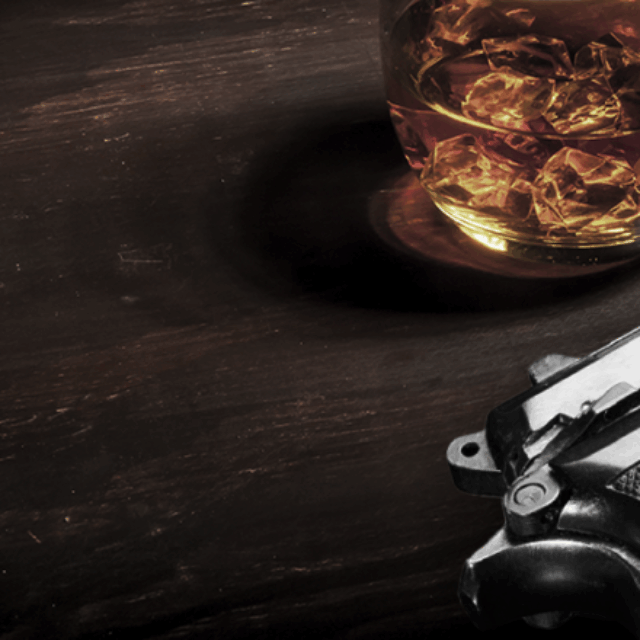
Guns in Bars
Guns and alcohol don’t mix. There is strong evidence that people under the influence of alcohol are at an elevated risk of violent behavior.

Gun Law Navigator
The Gun Law Navigator is the largest historical database of modern U.S. gun laws.

Strategies for Reducing Gun Violence in American Cities
Residents and leaders of America’s cities face few challenges more urgent than gun violence.
All Resources
Prohibit Guns in Sensitive Areas
All Resources
Unpacking Arming Teachers Laws
To prevent tragedies we must implement strong school safety solutions, but arming teachers is not one of them.
Report
Armed Extremism Primer: Oath Keepers
The Oath Keepers organize around conspiracy theories and propaganda about the reasonable regulation of firearms.
Fact Sheet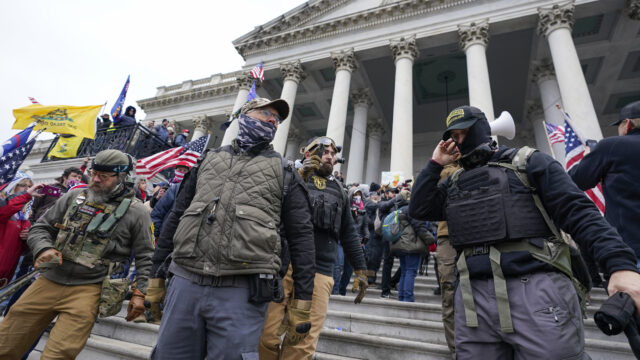
Armed Extremism Primer: Sovereign Citizens
Sovereign citizens fall under the umbrella of the wider right-wing anti-government extremist movement, which can include fixation on guns.
Fact SheetArmed Assembly: Guns, Demonstrations, and Political Violence in America
Armed demonstrations are nearly six times as likely to turn violent or destructive compared to unarmed demonstrations.
Report
Armed Extremism Primer: The Boogaloo
The boogaloo movement has risen to national prominence as a new and dangerous subset of the extreme right in the United States.
Fact Sheet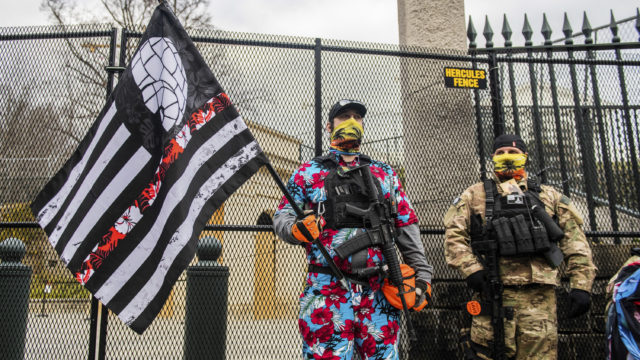
More Than Brawlers: The Proud Boys and Armed Extremism
Many far-right groups, including the Proud Boys, use fearmongering and conspiracy theories in an attempt to stop any reform of gun laws.
Fact Sheet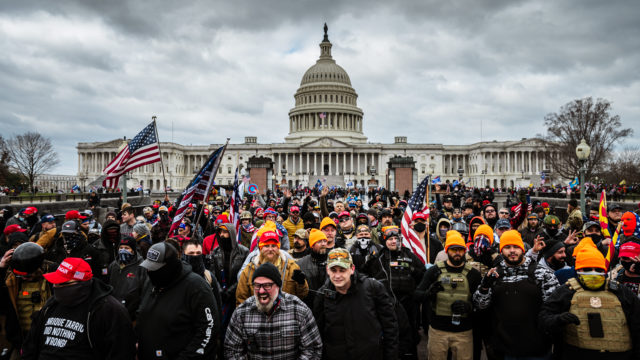
The Role of Guns & Armed Extremism in the Attack on the U.S. Capitol
The attack on the U.S. Capitol is the latest demonstration of the danger armed extremism poses to our democracy.
Report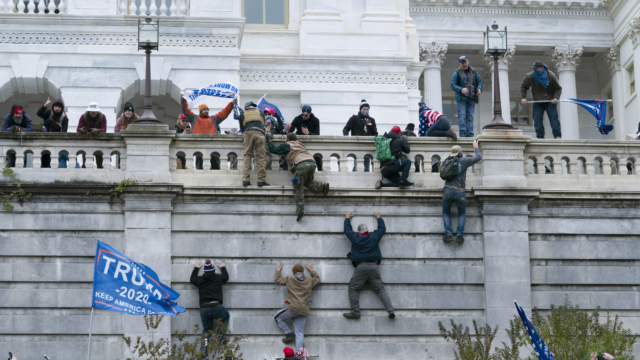
The Danger of Guns on Campus
Guns on campus are likely to lead to more shootings, homicides, and suicides, and they’re unlikely to prevent mass shootings.
Fact Sheet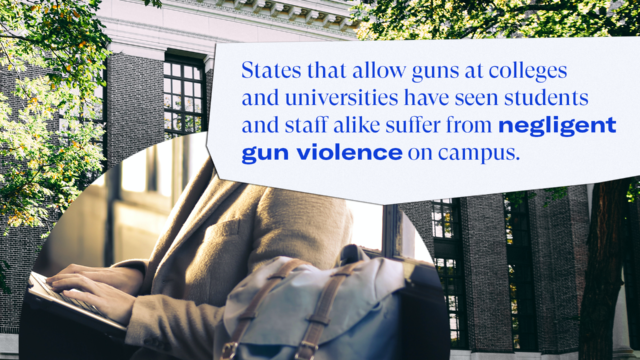
Armed COVID-19 Protests Exploit Open Carry Loophole
Lawmakers should close the open carry loophole and regulate open carry, particularly at demonstrations held on capitol grounds.
Fact Sheet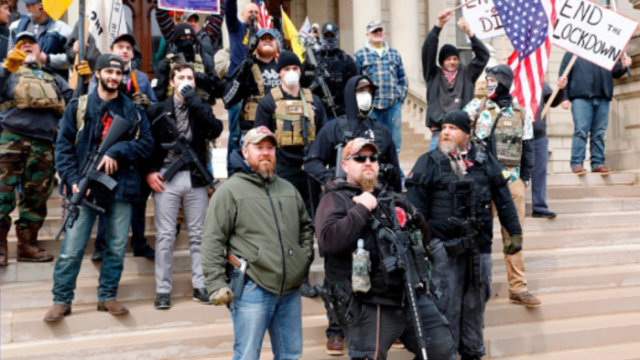
Keeping Our Schools Safe: A Plan for Preventing Mass Shootings and Ending All Gun Violence in American Schools
The failure of our leaders to address the root causes of school gun violence is having lasting consequences for millions of children.
Report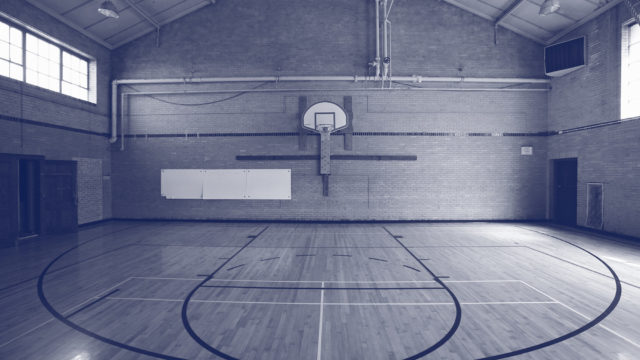
Permitless Carry: Carrying a Concealed Gun in Public with No Permit and No Training
Permitless carry legislation is part of the NRA’s broader agenda to weaken and repeal important gun safety measures.
Fact Sheet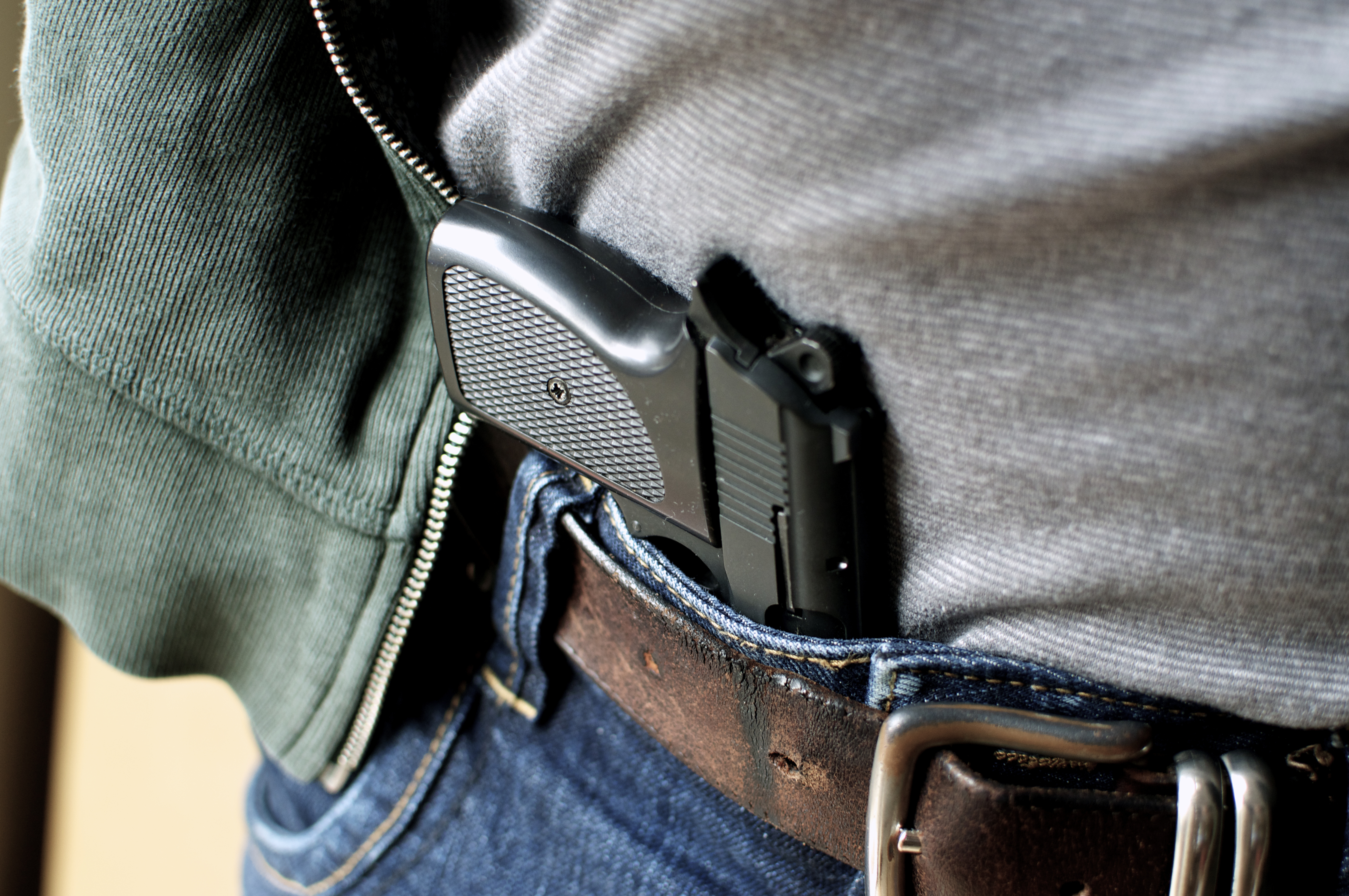
State Firearm Preemption Laws
State firearm preemption laws are a relatively recent phenomenon inconsistent with centuries of American history in which cities and rural areas had different gun laws.
Fact Sheet
